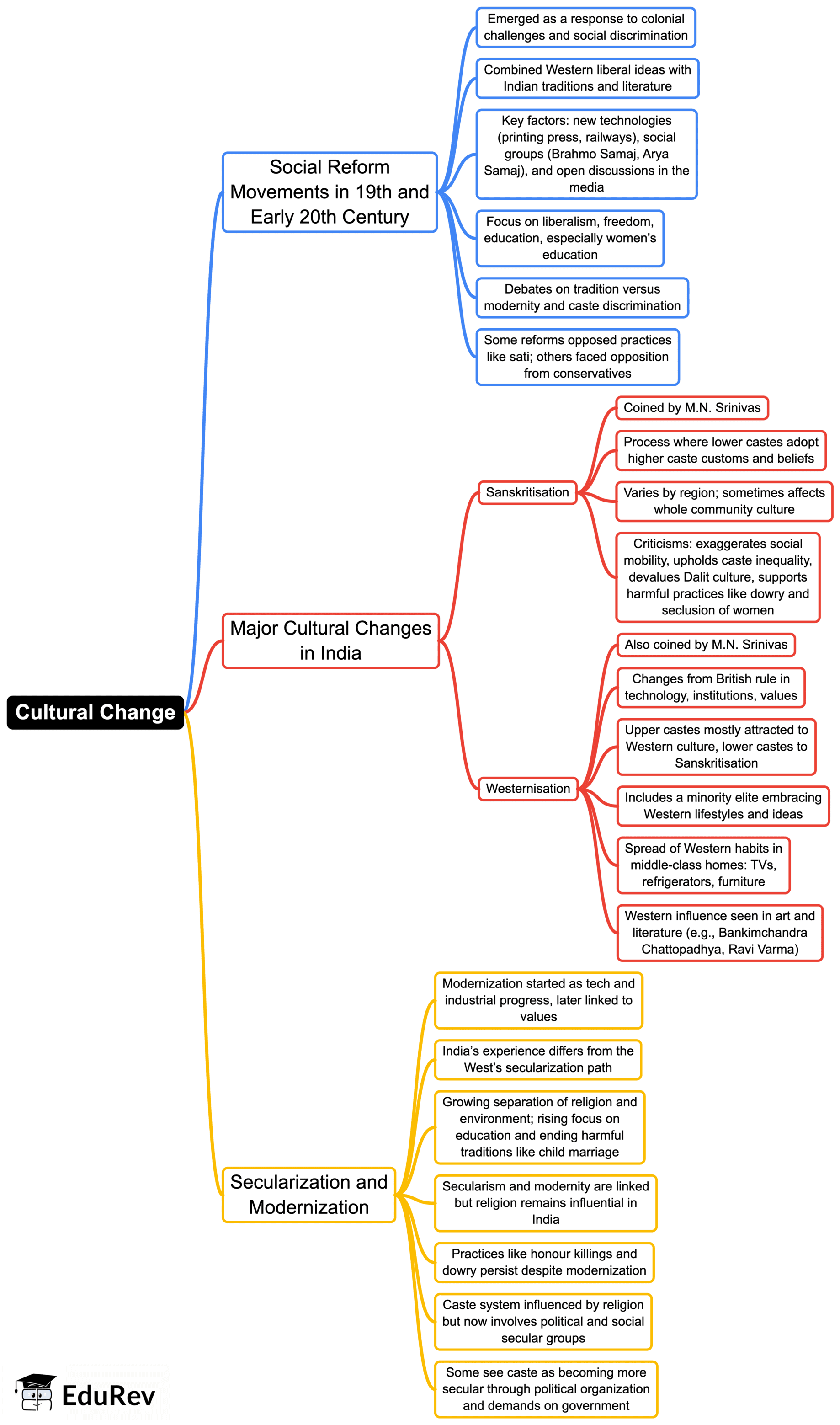Humanities/Arts Exam > Humanities/Arts Notes > Sociology Class 12 > Mind Map: Cultural Change
Mind Map: Cultural Change | Sociology Class 12 - Humanities/Arts PDF Download

The document Mind Map: Cultural Change | Sociology Class 12 - Humanities/Arts is a part of the Humanities/Arts Course Sociology Class 12.
All you need of Humanities/Arts at this link: Humanities/Arts
|
62 videos|157 docs|25 tests
|
FAQs on Mind Map: Cultural Change - Sociology Class 12 - Humanities/Arts
| 1. What is cultural change in the context of humanities and arts? |  |
Ans.Cultural change refers to the transformation of cultural practices, beliefs, values, and artifacts over time. In the humanities and arts, it encompasses shifts in societal norms, artistic expressions, and the ways communities engage with their cultural heritage. This change can be influenced by various factors, including technological advancements, globalization, and interactions between different cultures.
| 2. How has globalization impacted cultural change in the arts? |  |
Ans.Globalization has significantly influenced cultural change by facilitating the exchange of ideas, artistic styles, and cultural practices across borders. It has led to a blending of cultures, resulting in hybrid art forms and the emergence of global artistic movements. However, globalization can also pose challenges to local cultures, as dominant cultures may overshadow or erase traditional practices.
| 3. What role do artists play in cultural change? |  |
Ans.Artists are crucial agents of cultural change as they reflect and challenge societal norms through their work. They use their creativity to address social issues, provoke thought, and inspire movements. By presenting new perspectives and questioning the status quo, artists can influence public discourse and contribute to cultural evolution.
| 4. Can cultural change be both positive and negative? |  |
Ans.Yes, cultural change can have both positive and negative effects. On the positive side, it can lead to greater social awareness, inclusion, and innovation in artistic expression. However, it can also result in the loss of traditional values, cultural homogenization, and conflicts between different cultural groups. The impact of cultural change often depends on the context and the manner in which it is embraced or resisted.
| 5. What are some examples of historical cultural changes in the arts? |  |
Ans.Historical examples of cultural change in the arts include the Renaissance, which marked a revival of classical learning and a shift towards humanism; the Harlem Renaissance, which celebrated African American culture and arts; and the advent of modernism, which broke away from traditional forms and embraced experimentation. Each of these movements reflected broader societal changes and contributed to the evolution of artistic practices.
Related Searches





















